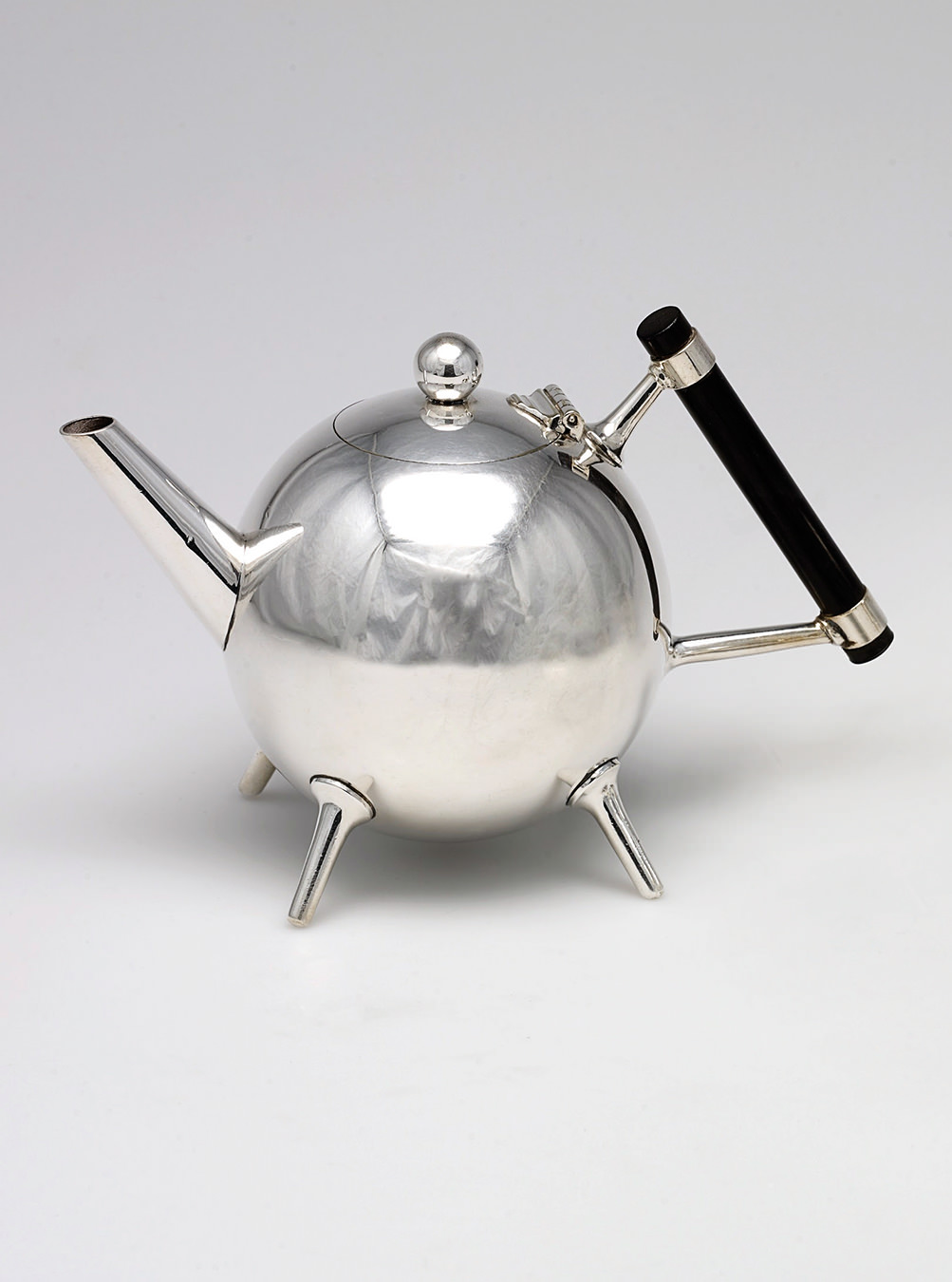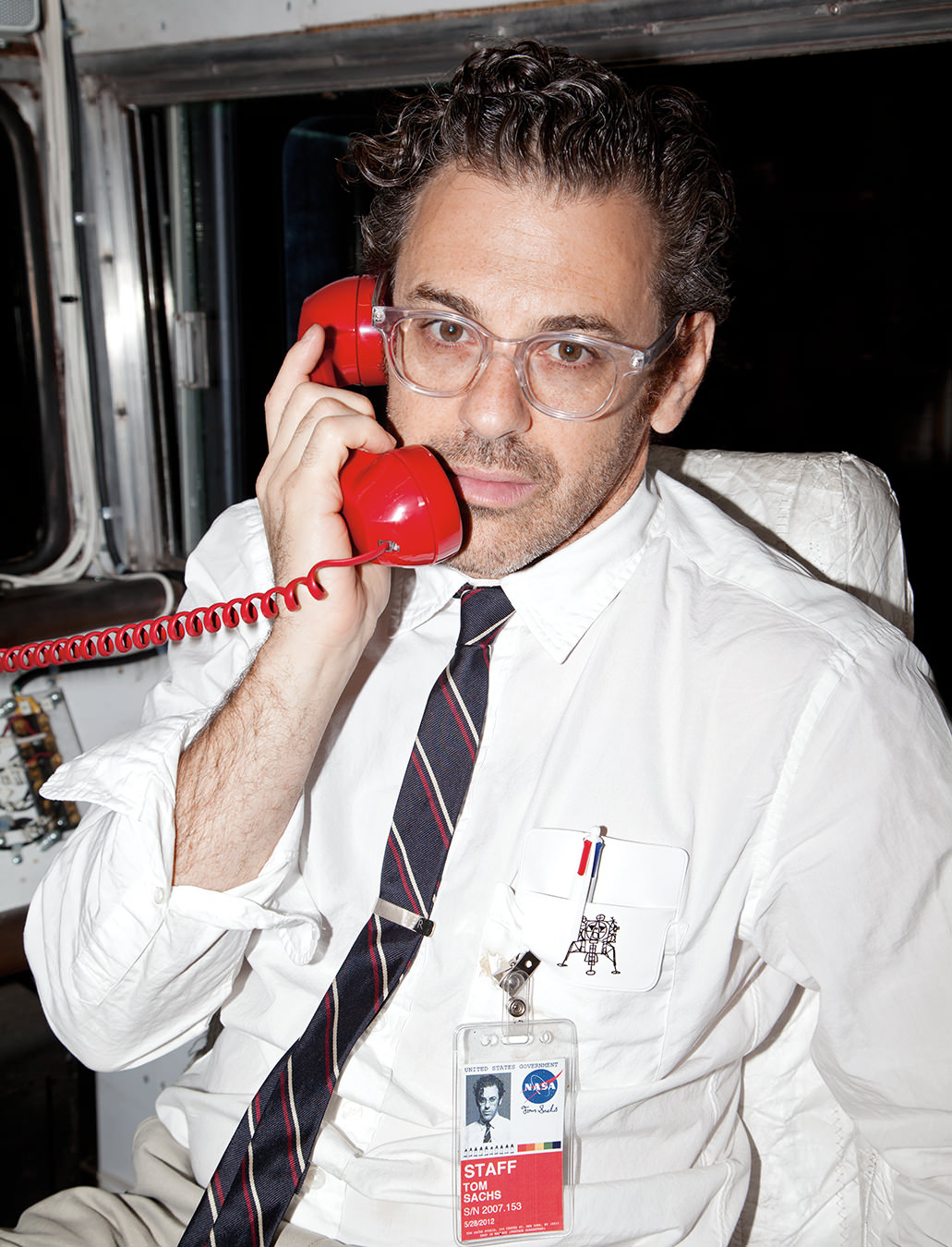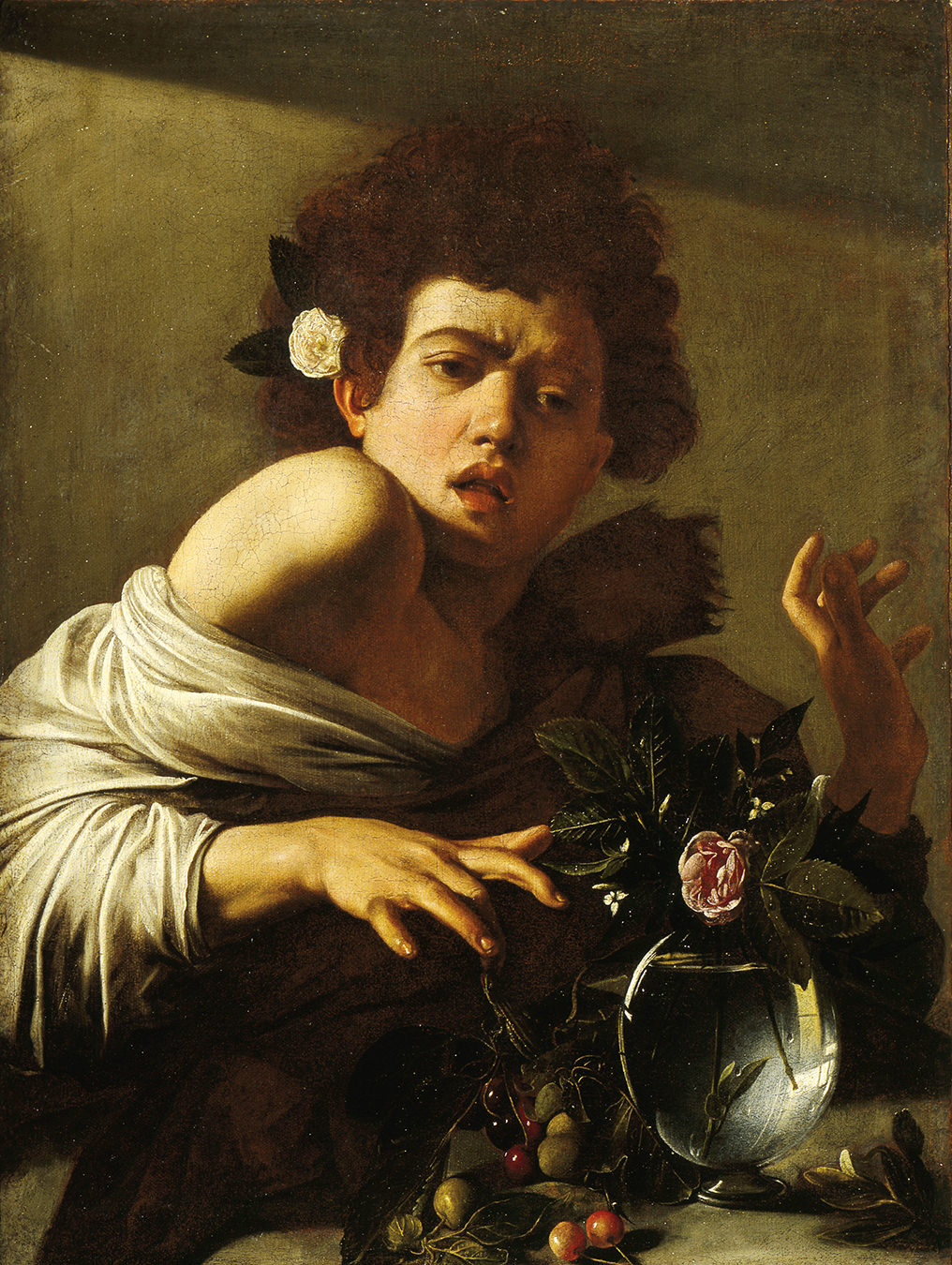-
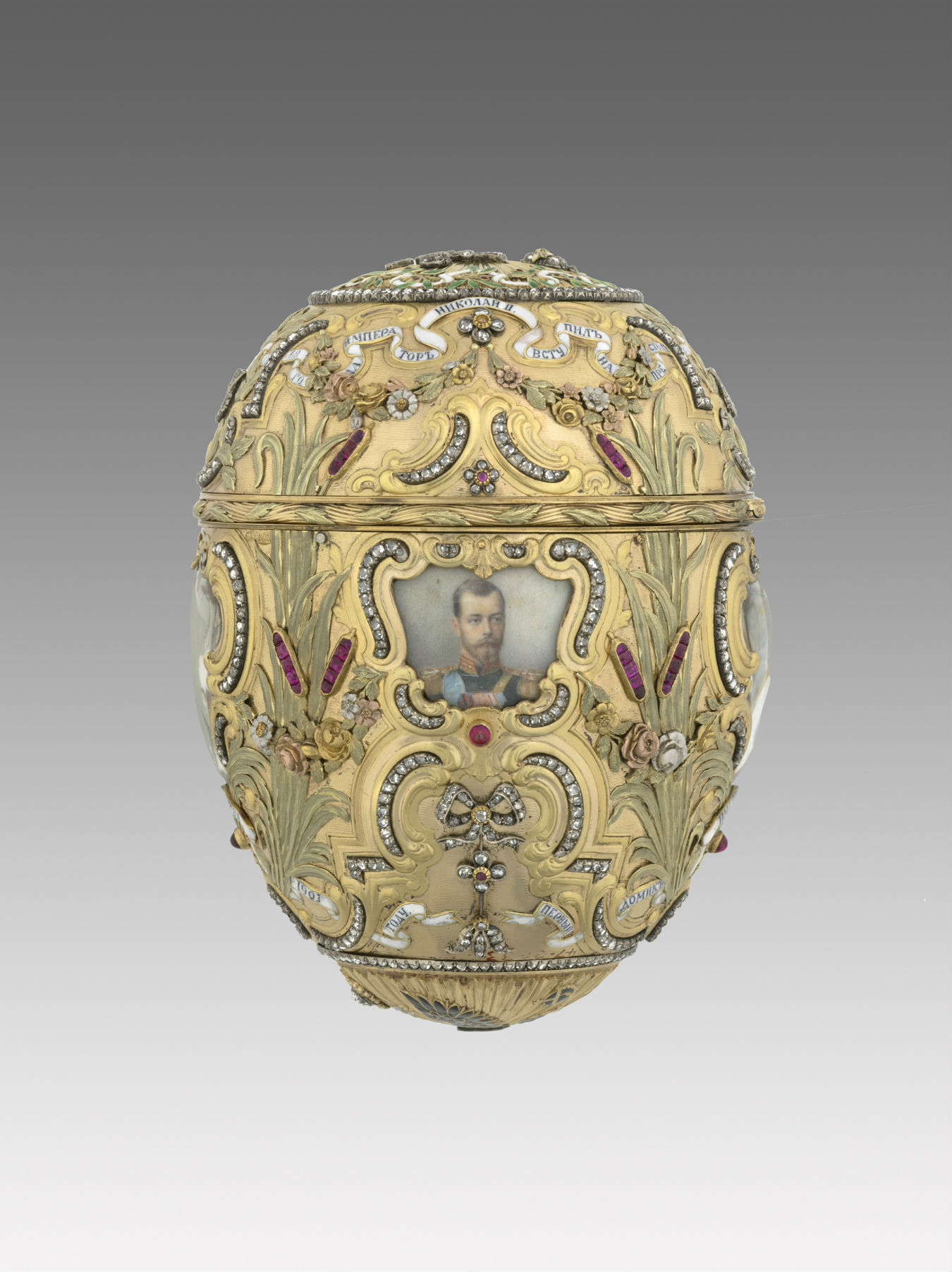
Imperial Peter the Great Easter Egg, 1903. Egg: gold, platinum, silver gilt, diamonds, rubies, enamel, watercolor, ivory, rock crystal.
-

Imperial Cesarevich Easter Egg, 1912. Egg: Lapis lazuli, gold, diamonds.
-
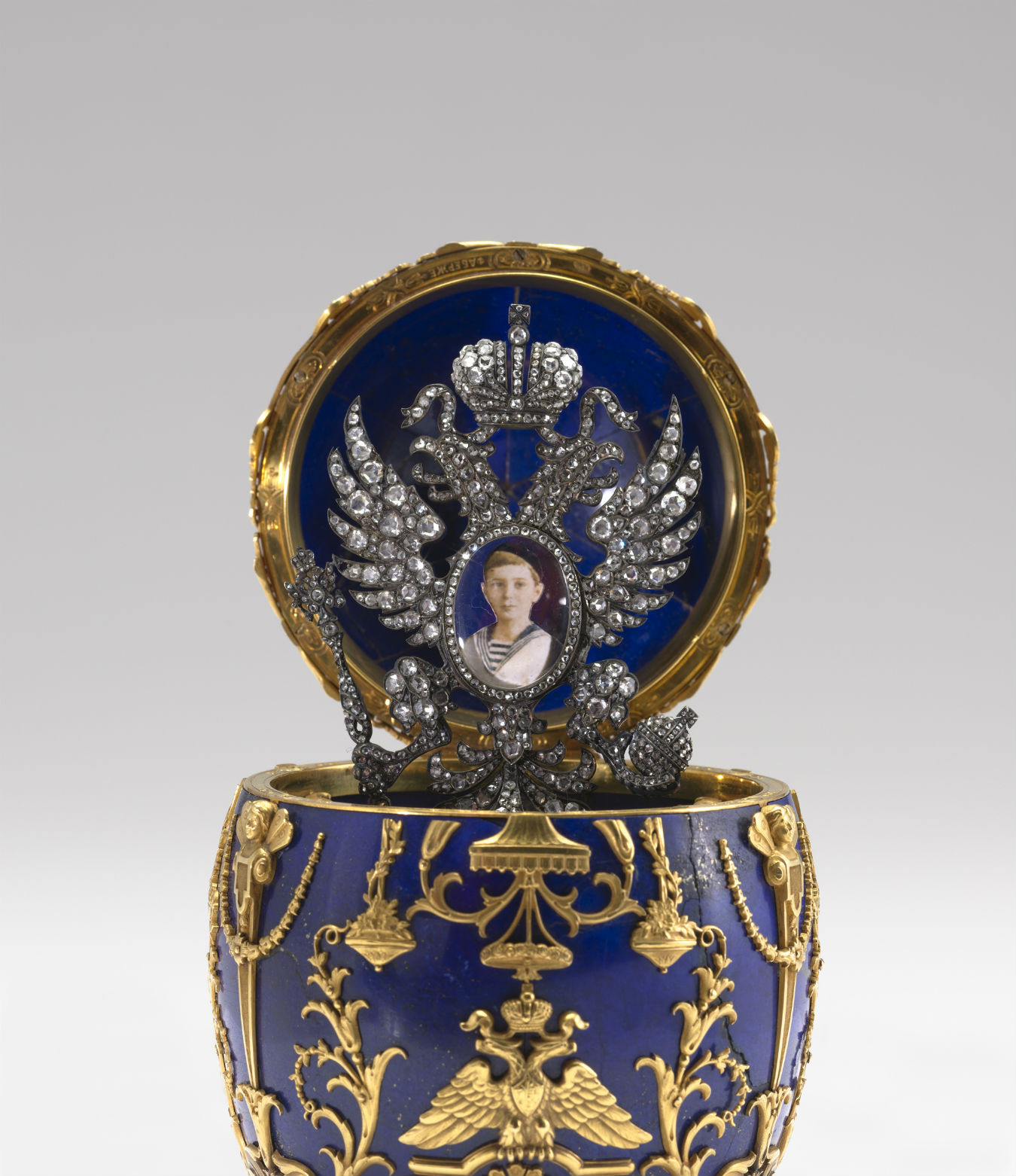
Imperial Cesarevich Easter Egg, 1912. Surprise: platinum, lapis lazuli, diamonds, rock crystal, watercolor, ivory.
-
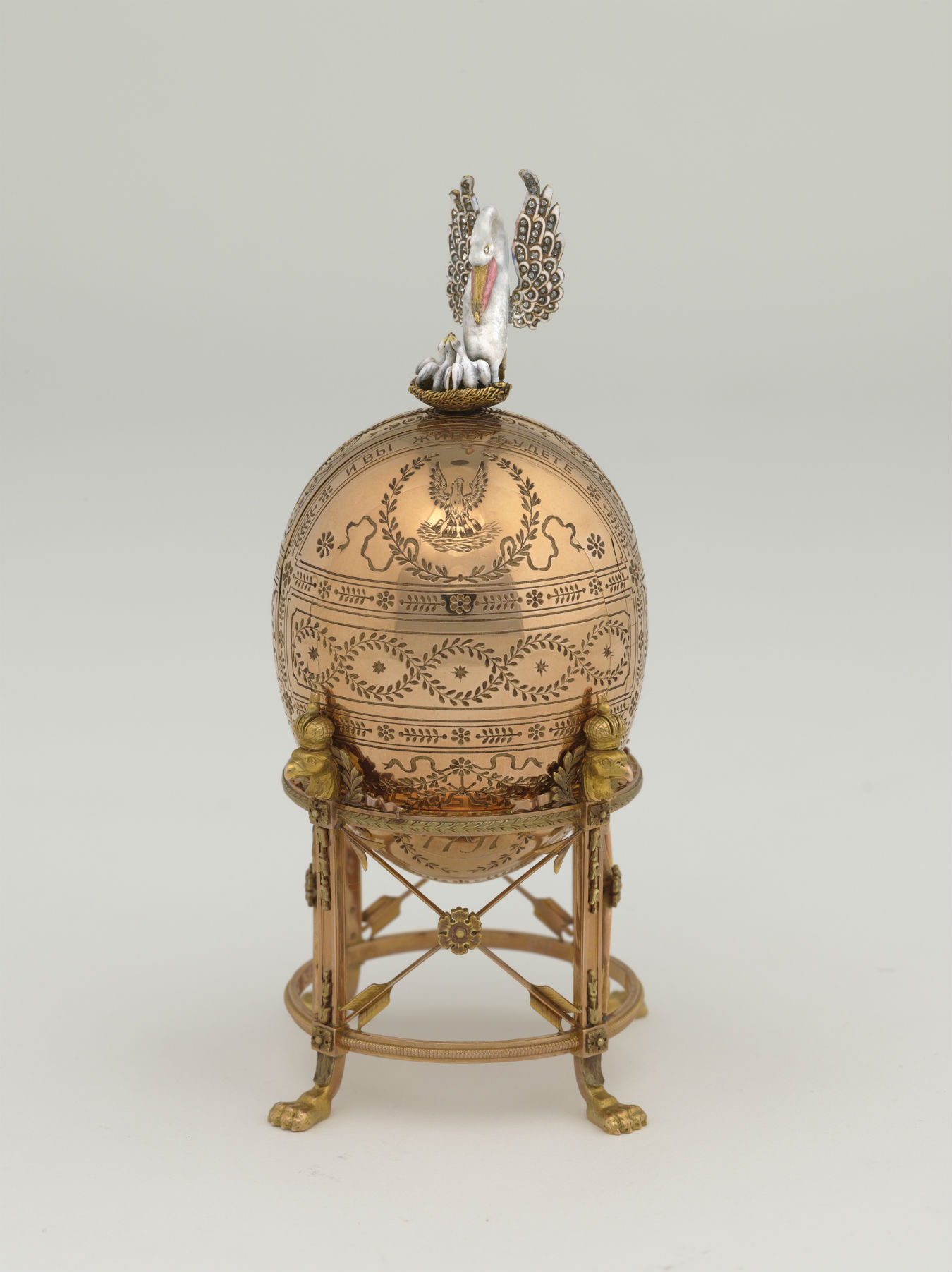
Imperial Pelican Easter Egg, 1897. Egg: gold, diamonds, enamel, pearls, ivory, watercolor, glass.
-

Miniatures inside the Imperial Pelican Easter Egg, 1897.
-
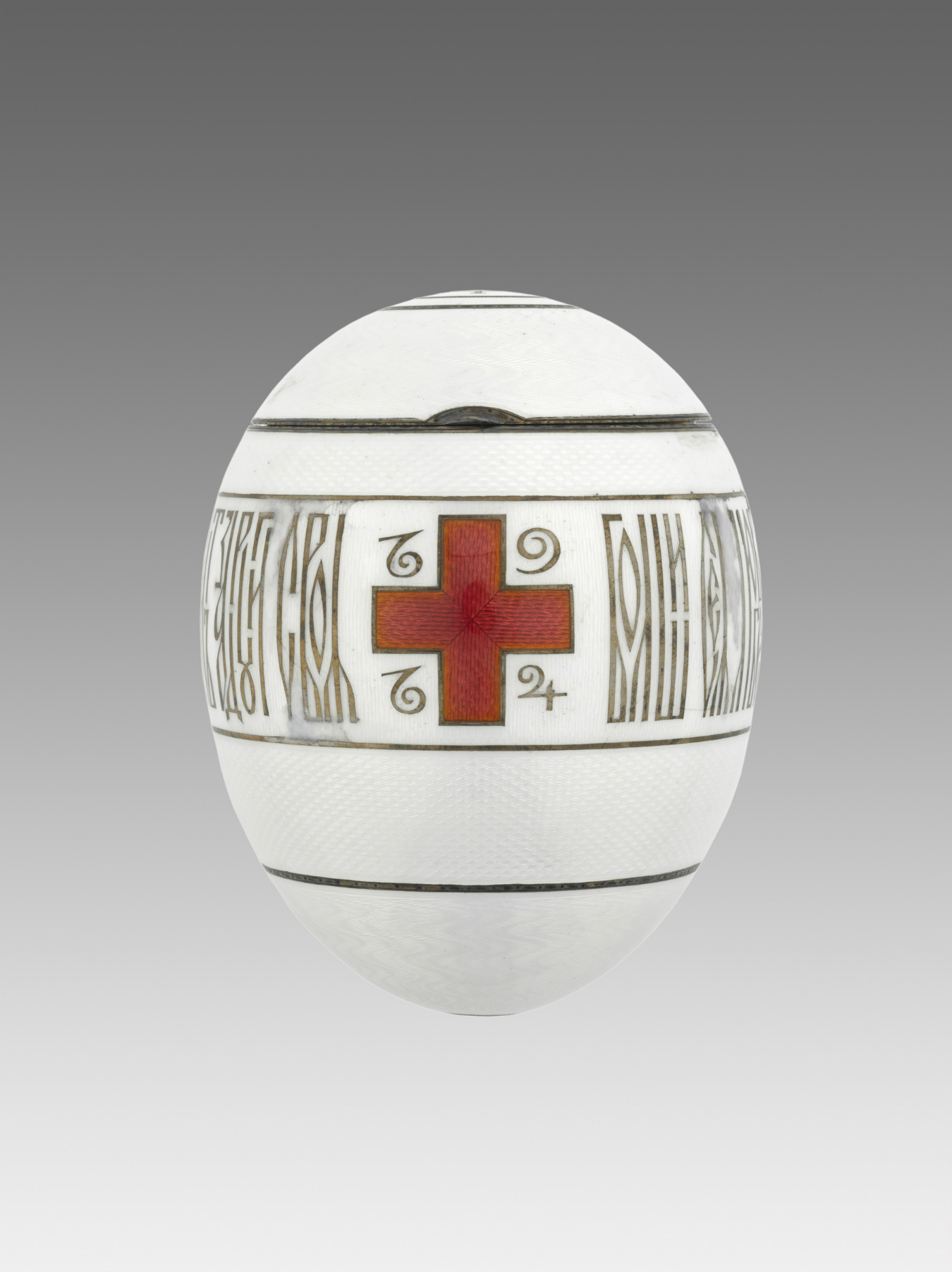
Imperial Red Cross Easter Egg with Portraits, 1915. Egg: gold, silver gilt, enamel, velvet.
-
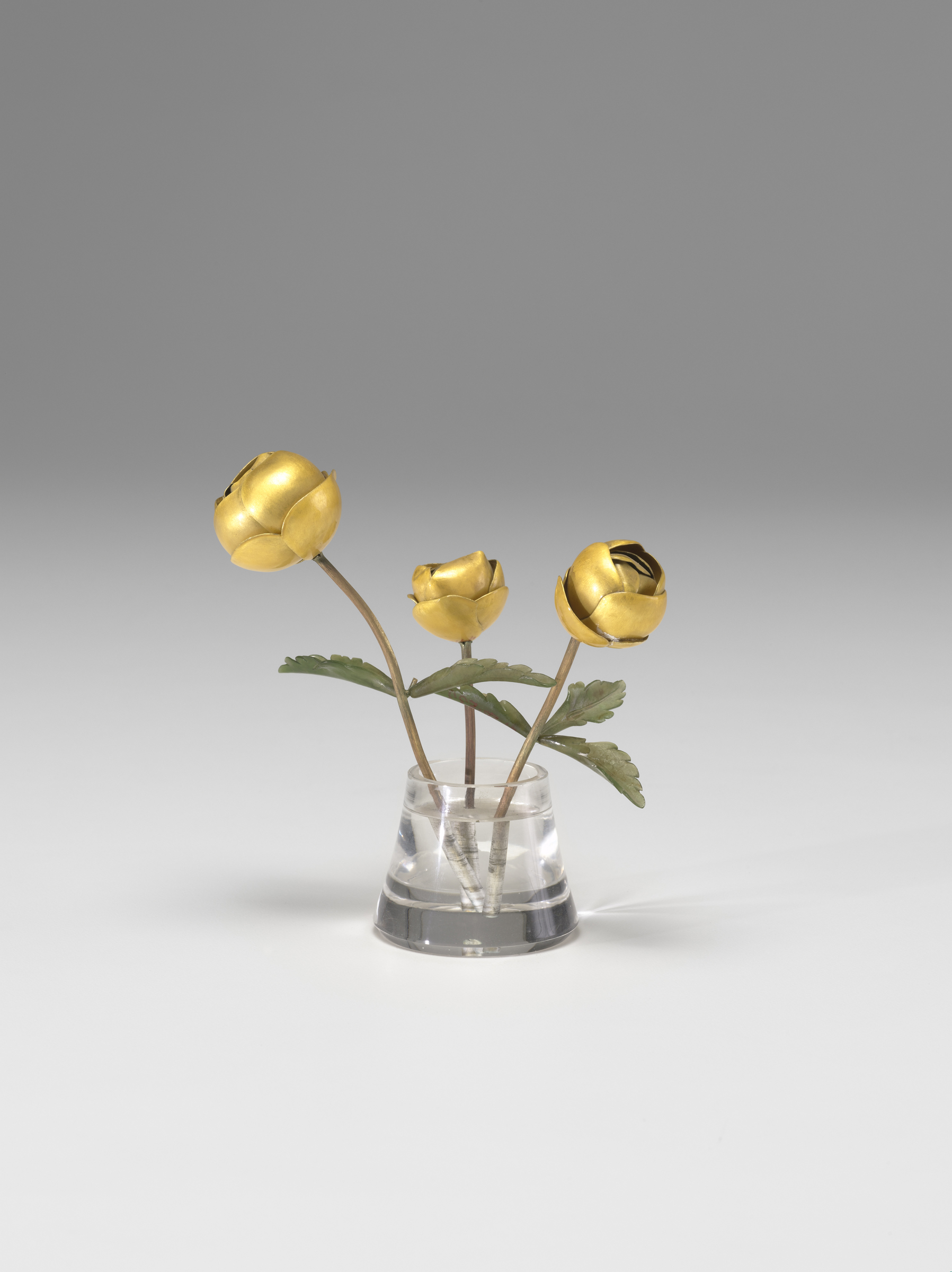
Globeflowers, about 1900. Gold, enamel, nephrite, rock crystal.
-
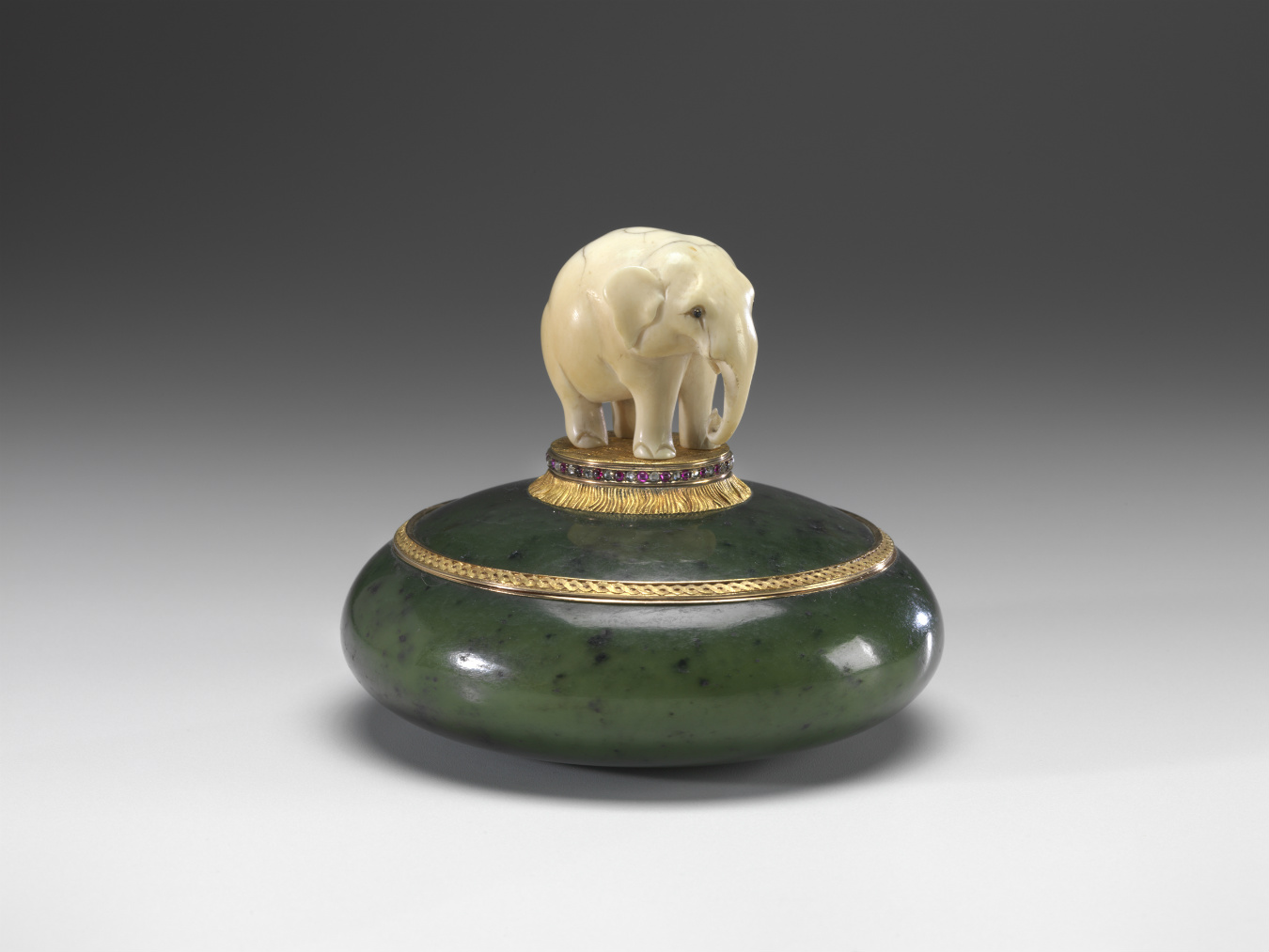
Elephant Box, before 1899. Nephrite, ivory, gold, silver, rubies, diamonds.
-
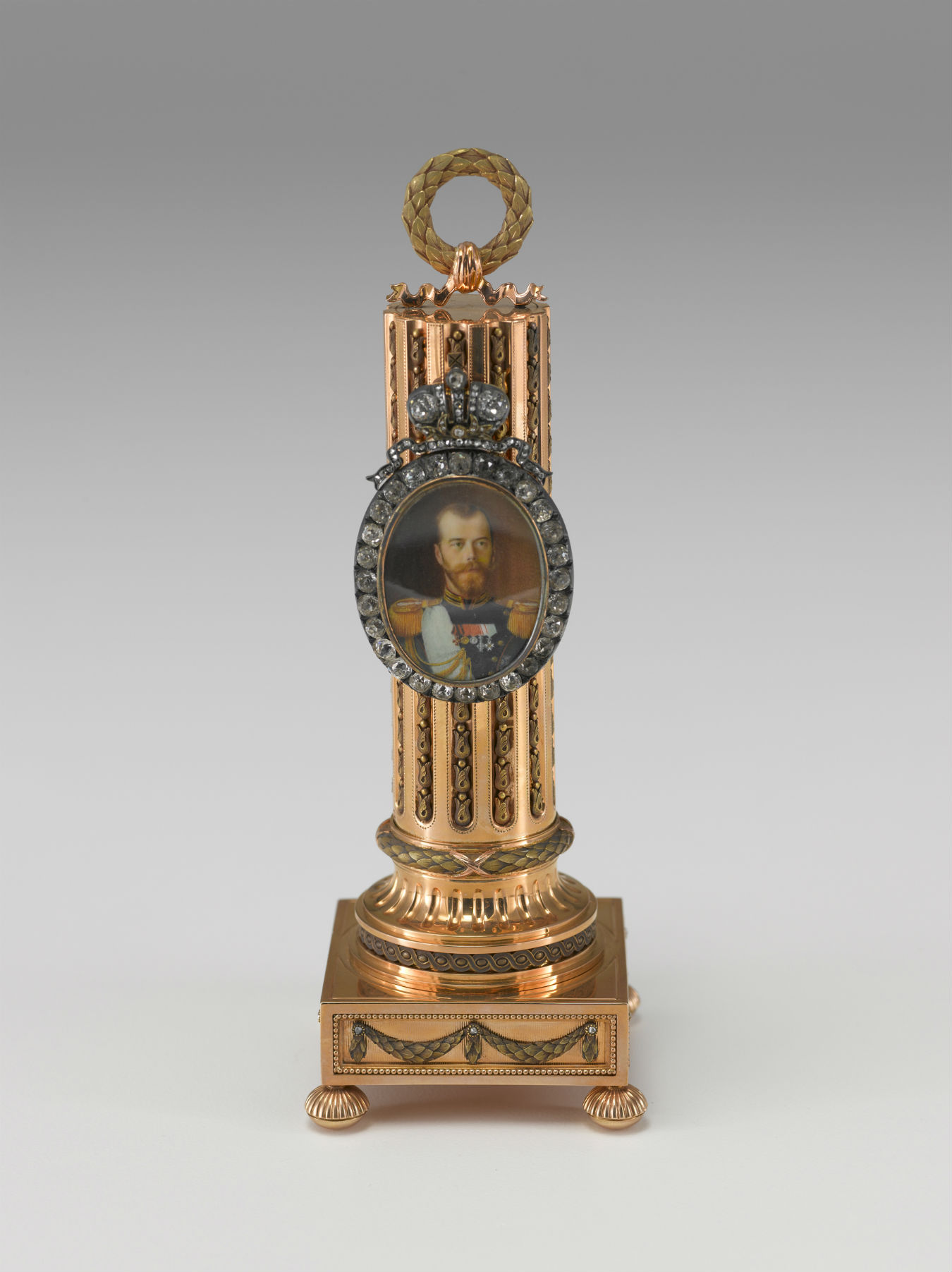
Column Portrait Frame with a Miniature of Nicholas II, Imperial presentation gift, 1908. Gold, silver, diamonds, ivory, watercolor.
-
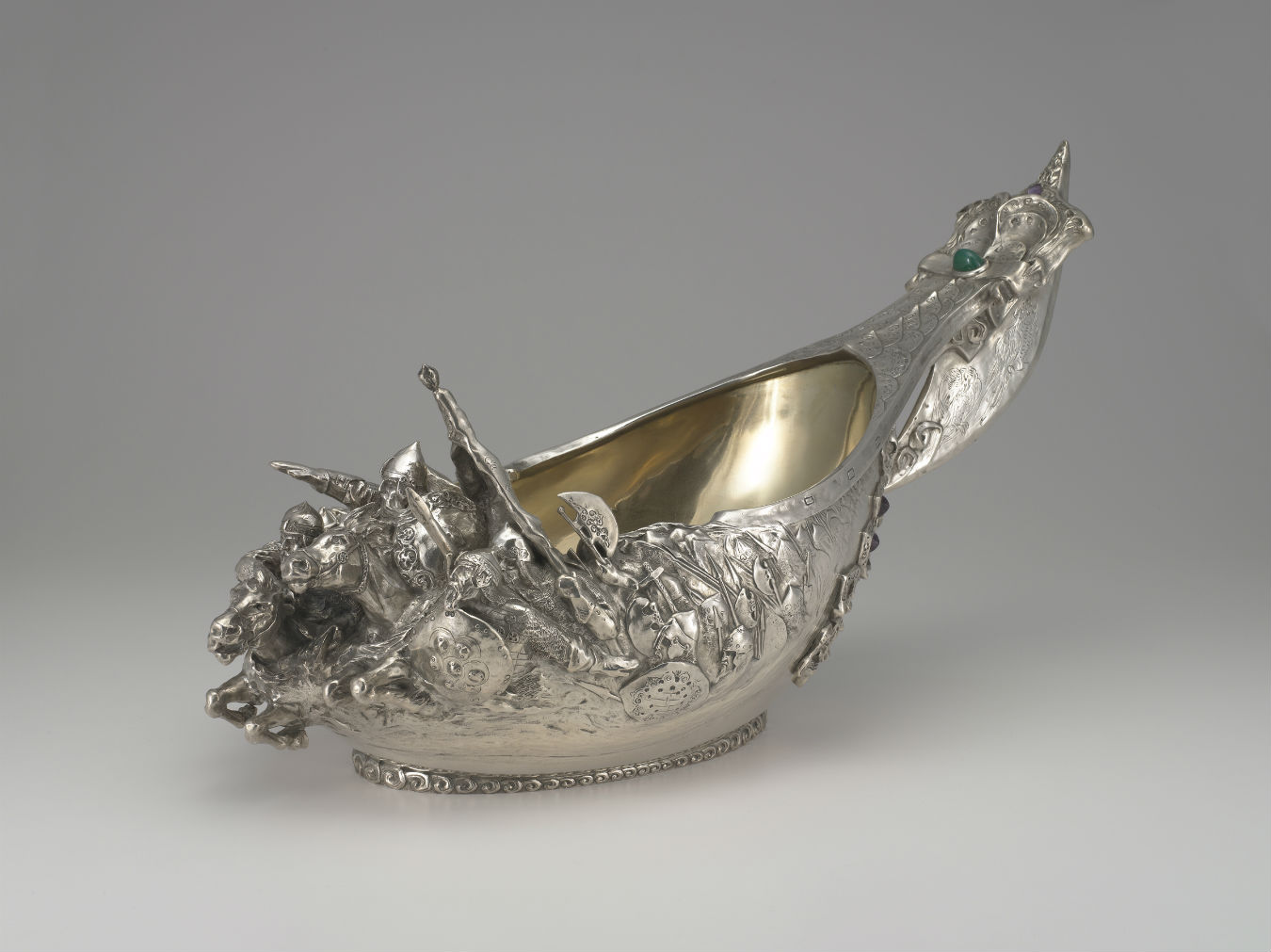
Brave Knights Kovsh, 1899–1908. Silver, gold, chrysoprase, amethysts.
-
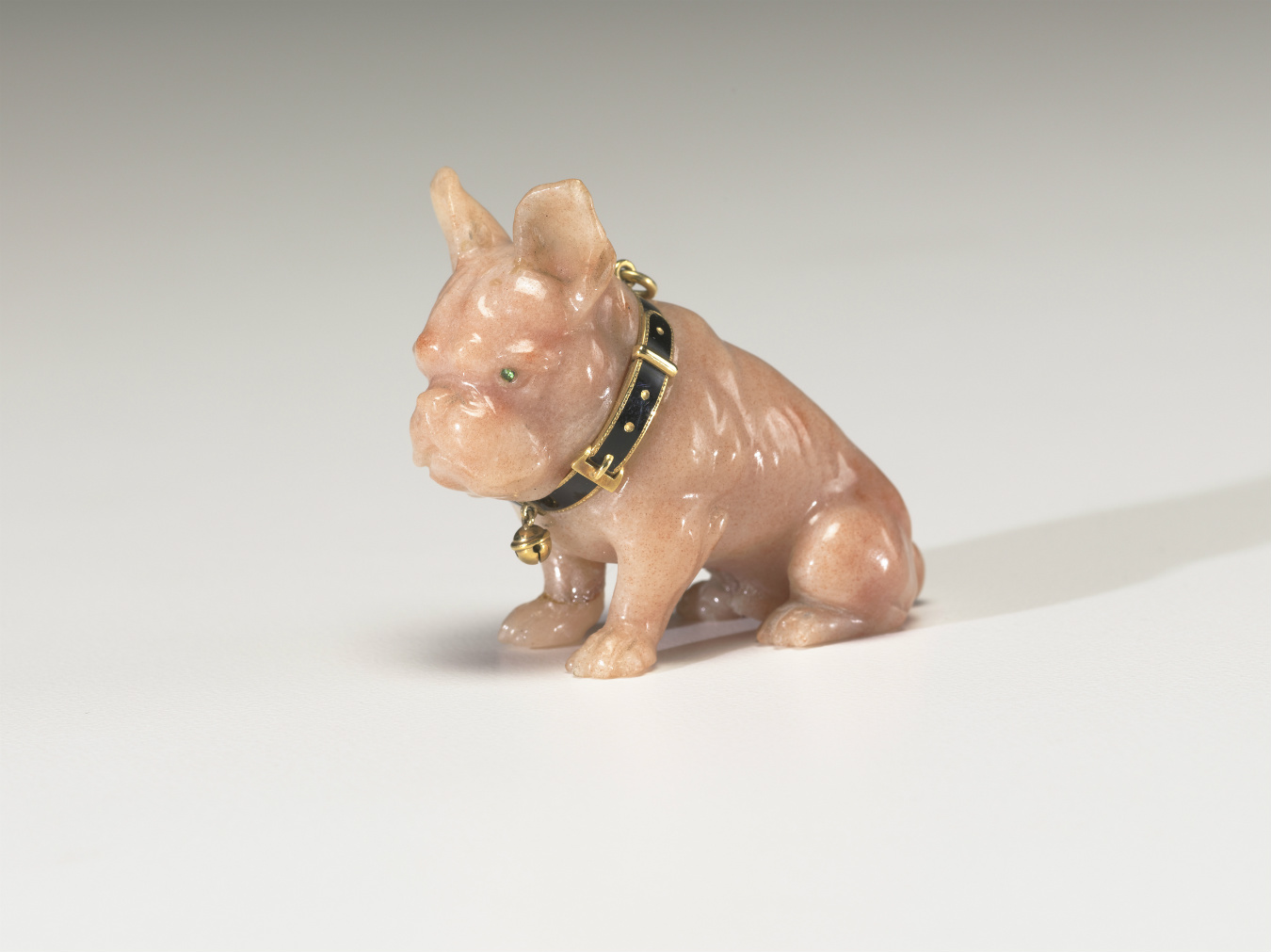
French Bulldog, about 1900. Aventurine, quartz, gold, enamel, emeralds.
-
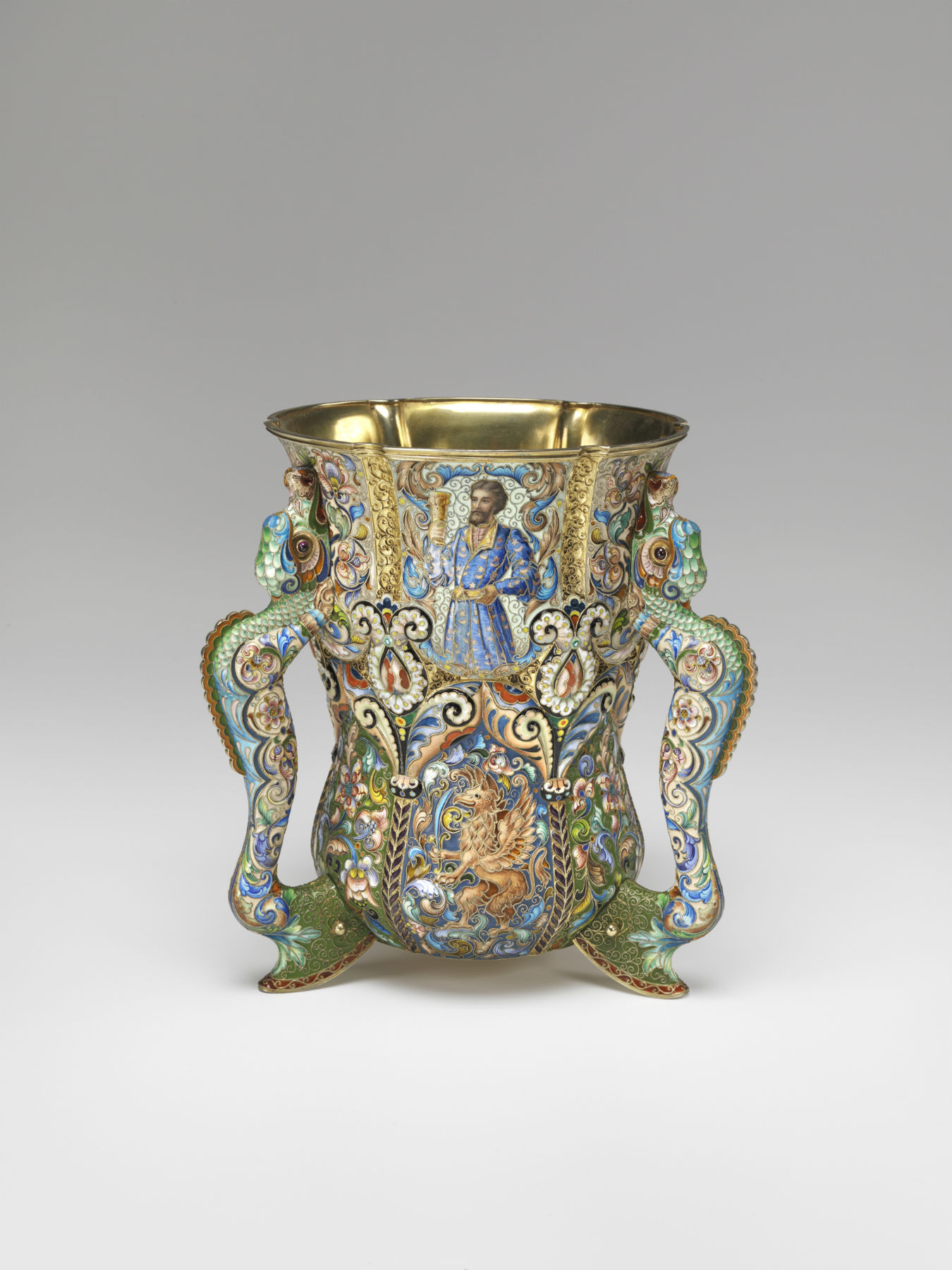
Loving Cup, 1899–1908. Silver gilt, enamel, garnets.
Fabulous Fabergé
Czar appeal.
“What is extraordinary about Fabergé is that he was so much more than just the imperial eggs, they are the absolute tip of the iceberg. They represent less than a quarter per cent of what he really produced.” This sentiment, expressed by one of the leading specialists on Fabergé, Géza von Habsburg, explains the prolific output of Russian jeweller Peter Carl Fabergé. For the first time, the largest collection of Fabergé works outside of Russia has come to Canada. On Saturday, June 14, the Montreal Museum of Fine Arts (MMFA) will open its doors to Fabulous Fabergé, an exhibition comprising 240 objects from the Virginia Museum of Fine Arts’ collection, including many lesser-known masterpieces.
The history of Fabergé is a storied one. A Russian goldsmith, he transformed his father’s modest jewellery business into the world’s largest enterprise of its kind, with over 500 employees at one time. As Wendy Kaur wrote in NUVO’s summer 2010 issue, “Fabergé was first recognized in 1882 when Czar Alexander III and his wife, Maria Feodorovna, bought one of his first creations, a pair of gold cufflinks. Three years later, he was commissioned by the Czar to create the very first jewelled Imperial Easter egg as a 20th-anniversary present to his wife, who was said to have been so enchanted with it that the eggs became an annual tradition to the Russian court.”
With his keen business acumen, Fabergé oversaw the production of some 200,000 objects between 1870 and 1917 before his firm fell along with the demise of Russia’s imperial family at the beginning of the 20th century. While tales of the jeweller examining every specimen with a hammer in hand, smashing any imperfect ones, may be just lore, the level of excellence demanded by Fabergé rings true. “If the piece wasn’t flawless, it got sent back to the workshop,” says von Habsburg. “The Dowager Empress called Carl Fabergé an incomparable genius. He was a cultural sponge. He travelled through Europe as a young lad and absorbed all these influences, and went back to Russia full of new ideas, creating a studio and a workshop, following in his father’s footsteps.
“Fabergé’s main focus was on novelty, he wanted always to be ahead of the curve. He wanted to introduce styles to Russia like art nouveau, and then later art deco, and always come with new ideas,” von Habsburg continues. “He did say that anything left at the end of the year was destroyed and melted down—not true—but his credo was things were always new, always novel, so that when you went to a Fabergé shop the following year, you did not see the same thing.”
A wealth of original examples are on show at the MMFA, organized into four main rooms, each one inspired by one of the four imperial eggs included in the exhibition. The exhibition curators, Diane Charbonneau and Sylvain Cordier, led by director and chief curator of the MMFA Nathalie Bondil, have told a rich tale of Russian’s thousand-year history, as the evolution and untimely fate of the jeweller was closely tied to that of the Russian imperial family.
The exhibition introduces guests to Orthodox traditions, followed by the lives of Russia’s various political protagonists, including Ivan the Terrible, Peter the Great, and Catherine II. Exhibition designer Hubert Le Gall—who previously designed the MMFA’s Édouard Vuillard exhibition in 2003, and Louis Comfort Tiffany exhibition in 2010—created tables that cast shadows of portrait profiles of each protagonist onto the walls. Another room is inspired by the House of Fabergé workshops, with curving white display tables modelled after Fabergé atelier workstations, the Imperial Cesarevich Easter Egg in the room’s centre. The Imperial Red Cross Egg with Portraits lends a somber mood to the telling of the fall of the Russian Empire and the House of Fabergé’s early demise. “I wanted to create a modern view of the past,” says Le Gall. “I want visitors to feel the history, but with fresh eyes.”
Within the clean, minimal space there is plenty to discover. From gilded dishes to ornate frames, snuffboxes, and cigarette holders, elevated by Fabergé from everyday object to exquisite pieces of art. There are whimsical animal figurines—bulldogs, owls, elephants, frogs—crafted from chalcedony, rock crystal, obsidian, and more. “For me, I love the enamels,” says Bondil, pointing to the three-handled Loving Cup. “They are very bright, fragile, and complex, and rich in terms of iconography. Fabergé is not only a great name, but this kind of design is very appealing and matches well with our permanent decorative arts and design wing. I wanted a ‘feel-good’ exhibition for summer, and this is truly a fabulous collection.”

